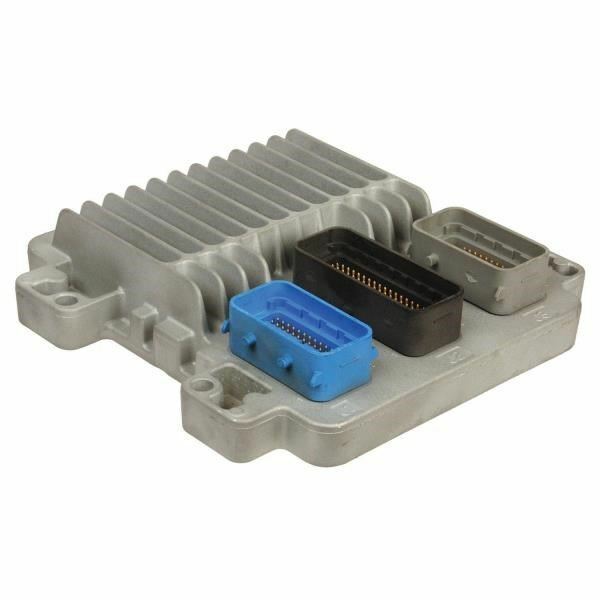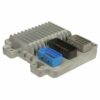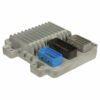Restore Your Vehicle’s Brain and Get Back on the Road
Is your 2005 Buick Rainier or other GM vehicle suffering from frustrating issues like intermittent stalling, a persistent Check Engine Light, rough idling, or a complete no-start condition? The Engine Control Module (ECM) is the central computer of your vehicle, managing everything from fuel mixture and ignition timing to transmission shifting. When it fails, it can cause a wide range of confusing and debilitating problems. This isn’t just an inconvenience; it’s a critical component for your vehicle’s performance, fuel economy, and reliability.
As a technician with over two decades of experience, I’ve seen firsthand how a faulty ECM can send mechanics and owners on a wild goose chase, replacing perfectly good sensors and parts. This direct-replacement 2005 Rainier Engine Control Module is the definitive solution to restore your vehicle’s factory operation. The best part? We handle the complex part for you. Before we ship, we will flash the module with the latest GM-certified software updates, programmed specifically to your vehicle’s VIN. This eliminates the need for an expensive trip to the dealership and ensures a seamless installation process.
Common Signs of a Failing ECM
- ✔ Unexplained Check Engine Light (CEL) illumination.
- ✔ Common diagnostic trouble codes (DTCs) such as P0601, P0602, P0606, or U0100.
- ✔ Engine stalling or shutting off unexpectedly while driving.
- ✔ Noticeable decrease in fuel efficiency.
- ✔ Vehicle entering ‘limp mode’ with reduced power.
- ✔ Harsh or erratic automatic transmission shifting.
- ✔ Complete failure to start, even with a good battery and starter.
Case Study: A Tricky Diagnosis
I remember a 2005 Trailblazer with the 5.3L that came into the shop on a tow truck. It would crank but never start. The owner had already replaced the fuel pump and crankshaft position sensor based on some forum advice. My initial scan showed no communication with the ECM. After verifying power and ground at the module’s connector—a critical first step—it was clear the ECM itself was the culprit. We installed a pre-programmed module just like this one, and the engine fired up on the first try. The customer saved hundreds by avoiding unnecessary parts and dealer programming fees.
A Straightforward Guide to Installation
Installing your new 2005 Rainier Engine Control Module is a manageable job for a confident DIYer. While the exact location varies slightly by model (e.g., LH engine bay for Rainier, RH for Corvette), the process is generally similar.
- Safety First: Disconnect the negative terminal from your vehicle’s battery and secure it away from the post to prevent accidental reconnection.
- Locate the ECM: On most of these SUVs, it’s located in the engine bay on the driver’s side, often near the fuse box or air filter housing.
- Disconnect the Connectors: Carefully release the locking tabs on the electrical wiring harnesses and pull them straight out from the module. Avoid pulling on the wires themselves.
- Remove the Old Module: Unbolt the mounting hardware that secures the old ECM to its bracket.
- Install the New Module: Mount the new ECM in place and tighten the hardware. Reconnect the wiring harnesses, ensuring they click securely into place.
- Reconnect the Battery: Reattach the negative battery terminal.
- Perform Security Relearn: Your vehicle may require a security relearn procedure (often called a CASE learn) to sync with the new ECM. This can typically be done without special tools and instructions are widely available online or in service manuals. This step is crucial for the vehicle to start and run correctly.
Verified Vehicle Compatibility
This module is a guaranteed fit for the following 2005 models. It is a direct replacement for service numbers 12578554, 12596771, 12597191, 12597883, and 19210071.
- 2005 Buick Rainier: 5.3L (LH engine)
- 2005 Chevrolet Corvette: (RH engine compartment)
- 2005 Chevrolet SSR: (next to air box)
- 2005 Chevrolet Trailblazer EXT: 5.3L (LH engine)
- 2005 GMC Envoy / Envoy XL / Envoy XUV: 5.3L (LH engine)
- 2005 Isuzu Ascender: 5.3L (LH engine)
- 2005 Pontiac GTO: Main (LH engine)
- 2005 Saab 9-7x: 8 cylinder (LH engine)
Frequently Asked Questions
Do I really need to provide my VIN?
Yes, absolutely. Providing your Vehicle Identification Number (VIN) is critical. We use it to load the precise, vehicle-specific software and the latest updates from GM onto the module before shipping. This ensures it communicates correctly with your vehicle’s other systems, saving you from a costly and time-consuming trip to the dealership for programming.
Is this a plug-and-play part?
For the most part, yes. Because we pre-program it, the most difficult step is already done. However, after installation, you will likely need to perform a security relearn procedure (also known as a CASE Relearn or Crankshaft Position Variation Learn). This synchronizes the new ECM with your engine and anti-theft system and can usually be done without any special tools.
Will this fix my poor fuel mileage?
If the poor fuel economy is caused by a faulty ECM not correctly managing the air/fuel mixture or ignition timing, then yes, this part can resolve that issue. A healthy ECM is essential for optimal engine efficiency and restoring the MPG your vehicle was designed to achieve.
How do I find my VIN?
Your 17-digit VIN can be found in several places: on the driver’s side of the dashboard (visible through the windshield), on the driver’s side door jamb sticker, and on your vehicle’s registration and insurance documents.



